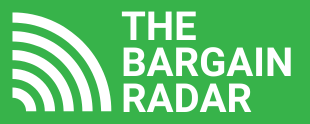
Yes, we at The Bargain Radar could just tell you what you already know! Pay more than the minimum on your credit cards, eat less take out and cook more at home and find ways to make money on the side. However, you know if you are in this position the first thing you need to do is admit to yourself and understand how you got here.
Living beyond your means and spending extra money when you know in your heart you cannot afford to. All these things are important to first come to terms with before you start your journey. If you can’t do that you will either fail keeping to the plans you make, or you will make good strides towards your goals and then old habits will take over.
Once you have that worked out, then plan, plan, plan. Look at what you owe and start to really evaluate your own personal path to recovery. Write out ALL your debts in amount order – including monthly bills, grocery needs, etc – then write out all your incomings in terms of household salaries. From this basic balance sheet, you can build a budget and get a REAL idea of what you can and can’t afford, where you may be able to cut costs and potential ways of making up the difference.
Once you have your plan in place, you can determine whether you need to:
Consolidate your debt.
This option can be a useful way to put all your credit cards, loans, and other debt into one payment, on one day per month. The process can be quite straight-forward and there are a host of debt consolidation companies out there to assist, including ClearOne Advantage, National Debt Relief, Curabet, and Lending Tree.
Pay more than the minimum
If you do not want to take this route, there are less drastic ways to start lowering your debt. The right one for you will depend on the total size of your debt. If it’s smaller (say $3-5,000) and you can make an impact on a monthly basis, it’s a good idea to pay as much more than the minimum monthly payment as you can afford. Adding $25 to each of your credit card payments can have a positive outcome in a short space of time.
Clear the smallest balance first
If you are looking at more than that, another option is to focus on the smallest balance first. So, say you have a four credit card balances, at $7,000, $5,000, $3,000 and $2,000 – focus on clearing the smallest amount first. Pay the minimum required on the others until you have the $2,000 cleared, then turn your focus onto the $3,000 balance. This has the dual results of clearing one of your debts completely and giving you the motivation and pride when you clear on –giving yourself the knowledge you can do achieve this.
Evaluate your bills and negotiate them DOWN!
It is almost a guarantee that you are paying too much on some or all of your bills. That could be the data package on your phone that you never come close to using or any of your utility bills where you could be missing out on a better deal elsewhere. The problem for most people is finding out where those opportunities lie. Thankfully, there are multiple companies available who can do this for you. Companies like Billshark, Arcadia Power, EZSaves and many others who evaluate what you pay and find you ways to save. This is a great process to go through whether you have debt or not, but it can help you find quick ways to save and maintain lower bills in the future.
Earn extra money?
If you look at your total debt list and your incoming wages, you may see that you either need to earn some more money to cover your plan to get debt-free, or you could also choose to look for additional sources of income to speed your ability to make inroads into your debt quicker. This means you need to find, what is commonly known as a ‘Side Hustle’. This could be working for Uber or Lyft at weekends, spending two or three nights a week delivering food locally, writing a blog, signing up as a mystery shopper, or earning cashback on groceries and rewards on taking surveys at sites like Swagbucks and InboxDollar. These can all be great ways to help you on your personal crusade of paying off your debt. Get some more ideas in our ‘Make Money’ section.
